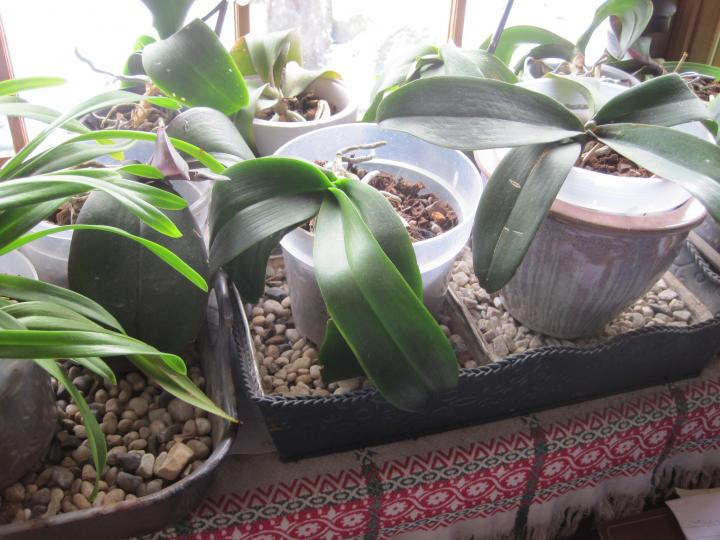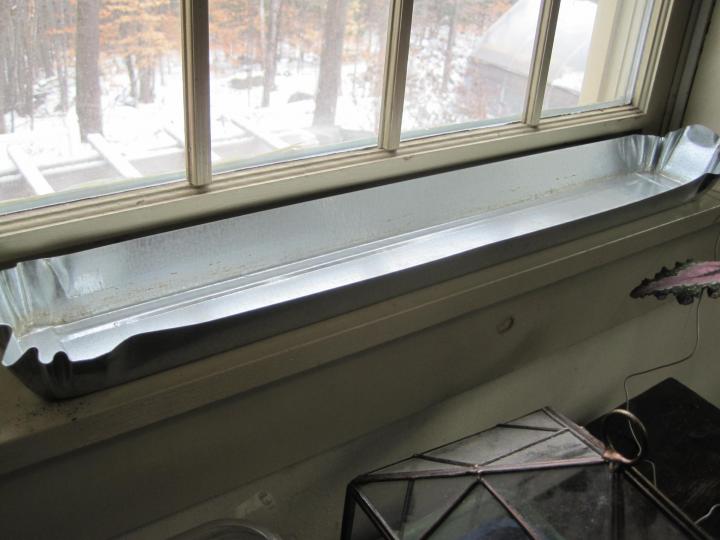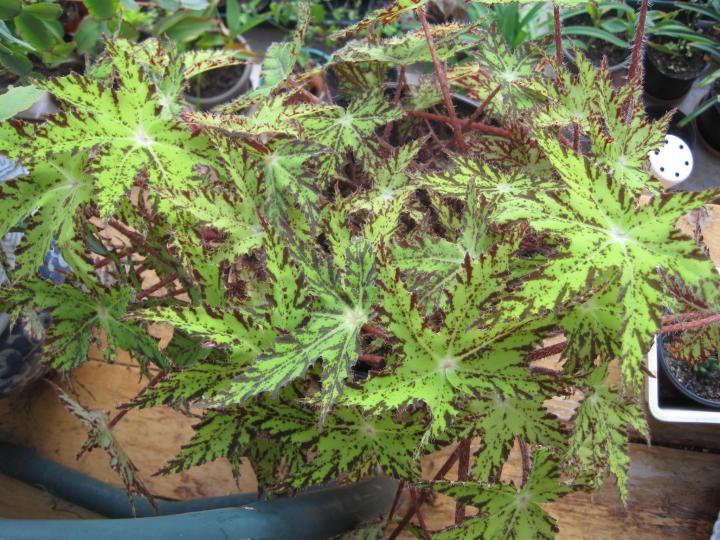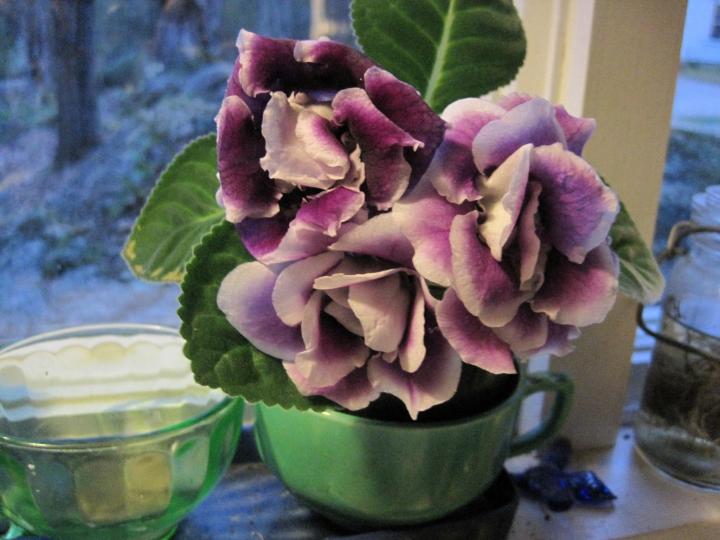Winter is when we need to see green plants the most, but environmental factors such as dry air, cold temps, drafts, and low light make it difficult to keep them growing at their best. Here are some tips for taking good care of your indoor garden during winter!
Advertisement
Winter Care for Houseplants
- Humidity is important. Home humidity in winter can be as low as 10 to 20%, but our plants like it closer to 50% humidity. The best way to remedy this is with a humidifier. (You will benefit from more moisture in the air, too!) If that is not something you can afford, try grouping your plants together to increase the humidity around them. As leaves transpire, they give off moisture, creating a slightly humid microclimate.
Placing a pebble tray beneath plants’ pots can help as well. Put 1 inch of pebbles or marbles in a flat, watertight container or metal tray and add 1/2 inch of water. Place plant pots in the tray. Pebbles will keep the bottoms of the pots above the water level so that roots don’t rot, but the water will slowly evaporate and raise the humidity around the plants. Misting with a spray bottle is not an effective way to raise humidity, but it can discourage insects such as spider mites, which prefer dry conditions.
 We use pebble trays to increase the humidity around these orchids.
We use pebble trays to increase the humidity around these orchids.
- Adequate light is critical for healthy plant growth. In winter, sunlight is at its lowest, so plants that need the most light should go in your south- or west-facing windows, close to but not touching the glass. To keep plants from leaning toward the light, rotate them a quarter-turn after watering.
 Inexpensive chicken feeders are made from galvanized metal and are great for holding plants on your windowsill. Purchase from your local farm store or look for used ones at yard sales.
Inexpensive chicken feeders are made from galvanized metal and are great for holding plants on your windowsill. Purchase from your local farm store or look for used ones at yard sales.
- Water is necessary for all living things, but sometimes we overdo it with our plants. Growth slows down in the winter, so many plants need much less water. Cool temperatures and low light keep the soil from drying out too fast, but plants kept near heat vents or in a room heated with a woodstove are going to dry out quickly. Rather than watering on a set schedule (such as once a week), it is best to water when your plants actually need it. Overwatering causes more plant death than underwatering!
Often, the top of the soil will dry out, but the bottom of the pot—where the roots are—is still moist. Before watering, stick your finger 1 to 2 inches into the soil to test how dry it really is. Another way to determine if a plant needs water is to lift the pot to see how heavy it is. Wait to water until it feels lighter than usual.
Plants in the sun will dry out faster than those in lower light, small pots dry out quicker than large ones, and plants in clay pots dry out sooner than plastic ones. Water plants deeply, until it runs out the bottom drainage holes, using room temperature water. Let the pots sit in water for 15 minutes or until extra water is absorbed, then dump out any remaining water and let pots drain.
 Unlike most plants this rhizomatous begonia actually needs to wilt a bit between waterings.
Unlike most plants this rhizomatous begonia actually needs to wilt a bit between waterings.
- Fertilizer is not usually necessary in winter, since growth has slowed or halted for most plants. Many even go into a dormant period during this time, so they require less light, water, and nutrients. Exceptions to that are flowering plants such as African violets and other gesneriads, as well as many orchids. Wait until new growth starts in the late winter or early spring to start fertilizing the other houseplants. Don’t feed a plant that is ill or resting. Overfeeding is the second highest cause of death after overwatering! We are killing our plants with kindness rather than by neglect!
 Gloxinia is an African violet cousin that likes a warm, sunny location.
Gloxinia is an African violet cousin that likes a warm, sunny location.
- Temperature is another important factor. Most plants do well in the same temperatures that we like: 65 to 75°F (18 to 24°C) during the day and 55 to 65°F (13 to 18°C) at night. Of course, there are sensitive plants such as African violets and some orchids that might like it warmer. Cool night temps help to keep insect populations down, too.
Managing Houseplant Insects
- Webbing, especially on the undersides of the leaves, indicates a spider mite infestation. Dispatch them with insecticidal soap spray. You can make your own from 1/4 teaspoon of liquid castile soap dissolved in 1 quart of water. They thrive in dry conditions, so this is one situation where misting often can help.
- Mottled leaves can be caused by sucking insects. Shake or tap leaves over a sheet of white paper and see what falls out. Black or red specks crawling across the paper means spider mites are present.
- Cottony masses mean mealy bugs have moved in. Kill individual bugs with a Q-tip dipped in alcohol.
- Sticky leaves are a sign that insects are at work. Hunt them down and rinse them off with water. Keep an eye out for their return.
- Aphids cluster on new growth, sucking the life out of it. Wash them off with a strong spray of water.
- Whiteflies rise up in a cloud when leaves are disturbed. They are attracted to yellow, so place a few yellow sticky cards around your plants to trap them.
- Fungus gnats are another annoying flying insect. They prefer wet soil conditions so let the top of the soil dry out between waterings. Like fruit flies, they can be trapped in a cup of apple cider vinegar and water, with a drop of dish soap added to break surface tension.
- Brown bumps mean scale has come to town. Smother them with and organic horticultural oil meant for houseplant use.
Other Houseplant Problems
Keep an eye out for these other common signs of trouble:
- Pot-bound plants struggle to grow. If you see roots growing out of the drainage holes in the bottom of the pot it is time to repot.
- Yellow leaves can indicate a lot of problems—not enough light, too much or too little water, or a sudden change in temperature or humidity.
- Leaf drop has several causes also—too cool, too wet, or too dark.
- Spindly, weak growth means not enough light. Don’t be afraid to prune leggy plants back. It will encourage branching.
- Wilting indicates too much or not enough water. If the soil is dry and the plant recovers when watered, then it was just extremely thirsty. If watering doesn’t help, smell the soil for signs of rot or fermentation. Roots can die from lack of air. Knock the plant out of the pot and look at the roots; they should be fat and white. If soft, brown, or black they are rotting. You can try to save it by clipping off the rotten parts and repotting, but in some cases it may be too late.
- Brown leaf tips are a sign of dry air. Increase the humidity around the plant.
- Brown, black, or yellow water-soaked or oily-looking spots are a sign of bacterial or fungal disease. Cut back watering, remove spotted leaves and any rotten stems. Check out the roots and trim off any rotten ones. Repot in fresh soil and pray!
Well-groomed plants are healthy plants. Remove faded flowers and any dead or diseased leaves. Dust on the leaves reduces plants’ ability to photosynthesize, so wipe them off with a damp sponge or soft cloth every now and then. Don’t use milk, mineral oil, or commercial foliage shiners to polish the leaves; it will clog their pores and attract dirt. The best way to keep your plants happy is to treat them to a warm shower once a month.
Related Content
In wintertime, ample light is always an important factor. See our article on the Best Houseplants for Low Light!
For a ton more houseplant care tips, check out our Houseplant Care Guide.

Comments